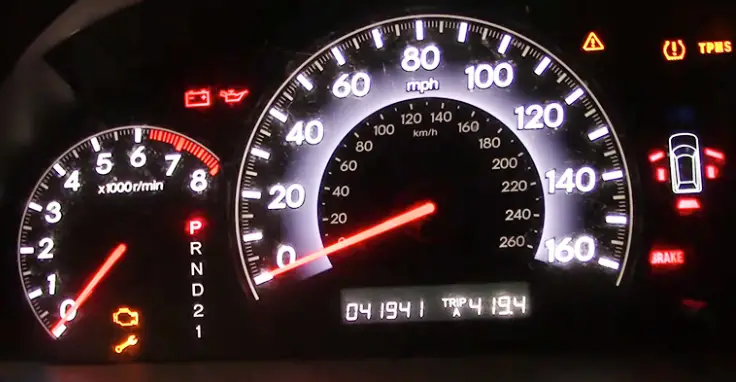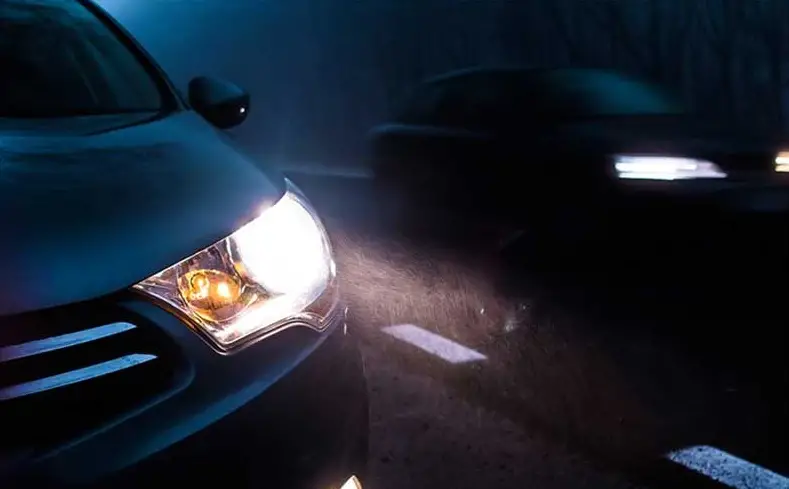Headlights and dash lights flicker when car is running can be caused by issues such as a failing alternator, a weak battery, or loose connections. These electrical problems disrupt the power supply to your vehicle’s lights, leading to flickering.
If you’ve noticed that your headlights and dashboard lights flicker while your car is running, it could be a sign of an underlying electrical issue. This problem can range from a minor issue, like a loose connection, to more serious concerns, such as a failing alternator or battery.
In this guide, we’ll explin the potential causes of flickering lights, how to diagnose the issue, and what steps you can take to fix the problem. Understanding these factors will help you maintain a safe and reliable vehicle.

Contents
The Electrical System
To comprehend why headlights and dash lights flicker when the car is running, it’s essential to understand the vehicle’s electrical system. The primary components involved are the battery, alternator, voltage regulator, and wiring system.
- Battery: Provides power to start the engine and supplies energy to electrical components when the engine is off.
- Alternator: Generates electricity to recharge the battery and power electrical systems while the engine is running.
- Voltage Regulator: Controls the voltage output from the alternator, ensuring a stable power supply to the vehicle’s electrical components.
- Wiring System: Transports electrical power from the battery and alternator to various components, including lights and dashboard instruments.
Common Causes of Flickering Lights
Flickering headlights and dashboard lights often point to issues within the vehicle’s electrical system. Identifying the root cause is key to addressing the problem and preventing further electrical malfunctions.
1. Faulty Alternator
The alternator is responsible for charging the battery and powering electrical systems while the engine runs. A failing alternator may not provide a consistent voltage, leading to flickering headlights and dashboard lights. Signs of a faulty alternator include dimming or flickering lights, a battery warning light on the dashboard, and unusual noises from the engine .
2. Weak or Dying Battery
A battery that is near the end of its life may struggle to maintain a charge, causing electrical fluctuations. This can result in flickering lights and difficulty starting the vehicle. Regular battery maintenance and timely replacement can prevent such issues .
3. Loose or Corroded Battery Terminals
Loose or corroded battery terminals can impede the flow of electricity, leading to intermittent power supply. This can cause headlights and dashboard lights to flicker. Regular inspection and cleaning of battery terminals can help maintain a stable electrical connection .
4. Faulty Voltage Regulator
The voltage regulator ensures that the alternator provides a consistent voltage to the vehicle’s electrical systems. A malfunctioning voltage regulator can cause voltage fluctuations, leading to flickering lights. If the alternator is functioning correctly but flickering persists, the voltage regulator may be the culprit .
5. Worn or Damaged Alternator Belt
The alternator belt drives the alternator, and if it’s worn or damaged, the alternator may not operate efficiently. This can lead to inconsistent power generation, causing lights to flicker. Regular inspection and replacement of the alternator belt can prevent such issues .
6. Electrical System Grounding Issues
A poor ground connection can cause electrical resistance, leading to voltage drops and flickering lights. Ensuring all ground connections are clean and secure can help maintain a stable electrical system.

Diagnosing the Problem
To accurately diagnose the cause of flickering lights, consider the following steps:
- Check Battery Voltage: Use a multimeter to measure the battery voltage. A healthy battery should read around 12.6 volts when the engine is off and between 13.5 to 14.5 volts with the engine running.
- Inspect Alternator Output: With the engine running, measure the voltage at the alternator. It should match the battery voltage. Significant discrepancies may indicate a problem with the alternator or voltage regulator.
- Examine Battery Terminals: Ensure that battery terminals are clean, tight, and free of corrosion. Clean and secure terminals can improve electrical connections.
- Inspect Wiring and Ground Connections: Check for any loose, frayed, or corroded wires, especially those connected to the alternator and battery. Also, verify that all ground connections are secure and free of corrosion.
- Test Voltage Regulator: If the alternator and battery are functioning correctly, but flickering persists, the voltage regulator may be faulty. Testing the voltage regulator requires specialized equipment and may need professional assistance.
Solutions to Fix Flickering Light
If you’re experiencing flickering headlights and dashboard lights, it’s important to address the underlying issue promptly. Here are the most common solutions to restore proper function to your vehicle’s electrical system.
1. Replace Faulty Alternator
If the alternator is not generating sufficient power, it may need to be replaced. A professional mechanic can perform tests to determine if the alternator is the source of the problem.
2. Replace Weak or Dying Battery
A failing battery should be replaced promptly to ensure reliable vehicle operation. Choose a battery compatible with your vehicle’s specifications.
3. Clean or Replace Battery Terminals
Clean any corrosion from battery terminals using a mixture of baking soda and water. Ensure terminals are tight and free of corrosion.
4. Replace Faulty Voltage Regulator
If the voltage regulator is malfunctioning, it should be replaced to maintain consistent voltage levels. This may require professional assistance.
5. Replace Worn or Damaged Alternator Belt
A worn or damaged alternator belt should be replaced to ensure efficient alternator operation. Regular inspection can prevent unexpected failures.
6. Secure Electrical System Ground Connections
Ensure all ground connections are clean, tight, and free of corrosion. This can improve the stability of the vehicle’s electrical system.

Preventative Measures of Flickering Light
To prevent future flickering light issues:
- Regular Maintenance: Schedule regular maintenance checks to ensure all electrical components are functioning correctly.
- Use Quality Parts: Use high-quality, compatible parts when replacing components like the alternator, battery, and voltage regulator.
- Avoid Overloading Electrical System: Limit the use of high-power accessories when the engine is idling to prevent overloading the electrical system.
- Monitor Electrical System Performance: Pay attention to any signs of electrical issues, such as dimming or flickering lights, and address them promptly.
Frequently Asked Questions
Here are some FAQs about headlights and dash lights flicker when car is running –
1. Can a faulty alternator cause headlights and dash lights to flicker?
Yes, a failing alternator may not provide a consistent voltage, leading to flickering headlights and dashboard lights.
2. How can I test my car’s battery and alternator?
Use a multimeter to test the battery voltage. A healthy battery should read around 12.6 volts when the engine is off and between 13.5 to 14.5 volts with the engine running. If the alternator is functioning correctly, the voltage at the alternator should match the battery voltage.
3. What should I do if my battery terminals are corroded?
Clean the battery terminals using a mixture of baking soda and water. Ensure the terminals are tight and free of corrosion.
4. Can a weak battery cause my lights to flicker?
Yes, a weak or dying battery may struggle to maintain a charge, leading to flickering lights.
5. When should I seek professional help for flickering lights?
If you’ve checked the battery, alternator, wiring, and voltage regulator without resolving the issue, or if you’re uncomfortable performing these checks, it’s advisable to consult a professional mechanic.
Conclusion
Flickering headlights and dashboard lights when the car is running are often indicative of underlying electrical issues. By understanding the potential causes and implementing the appropriate solutions, you can ensure the reliability and safety of your vehicle’s electrical system.